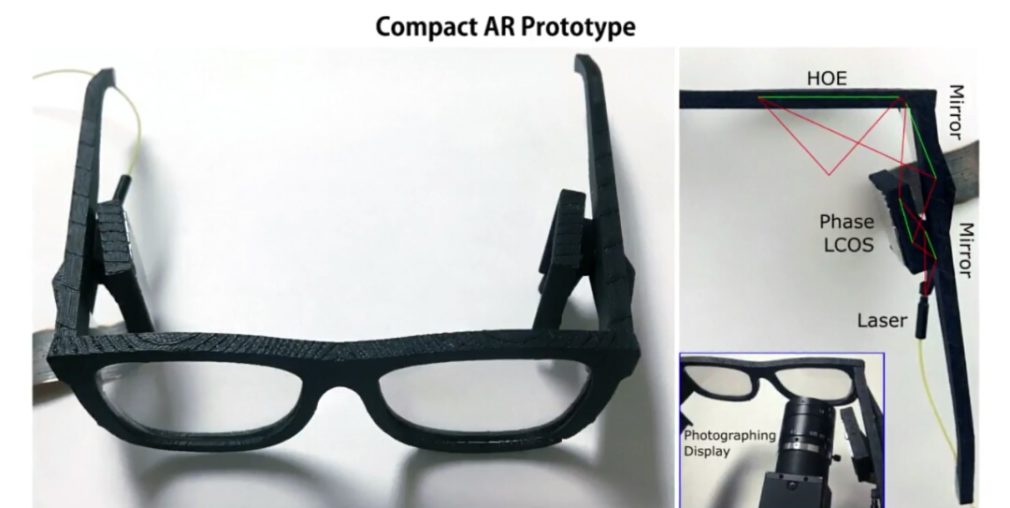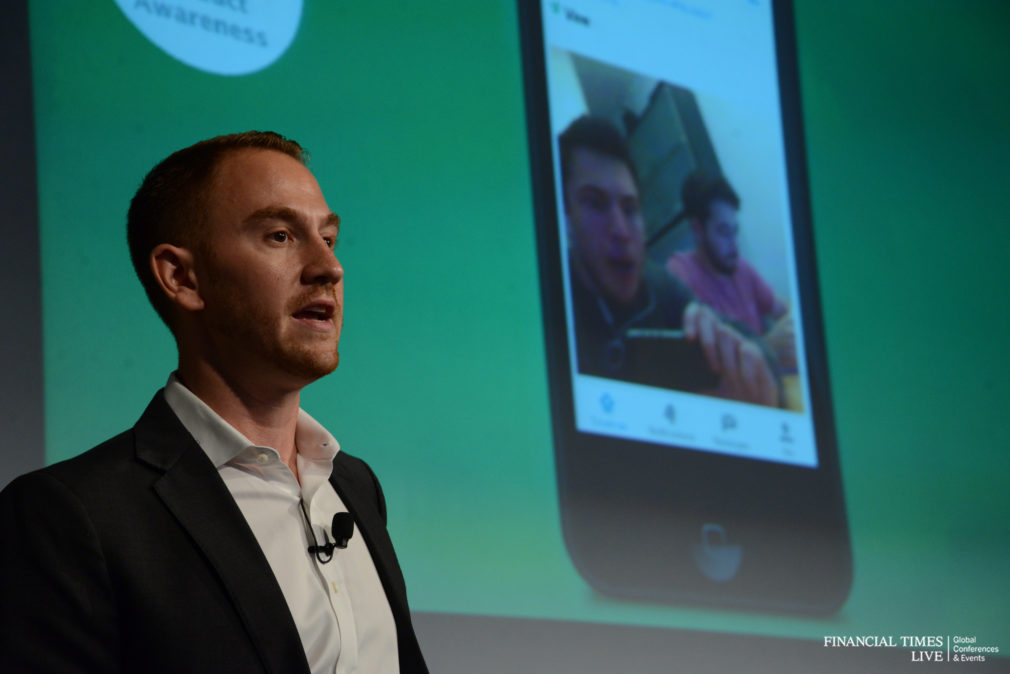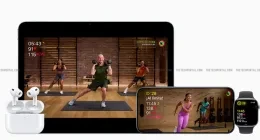Microsoft’s augmented reality efforts are currently being led by the bulky HoloLens, but Redmond is also experimenting with small near-eye holographic displays mounted on a pair of glasses. Out of the blue, Microsoft has dropped hints of what it is working on to not only improve the image quality but also shed the weight of the headset. It has today shown off prototype augmented reality (AR) glasses, which look quite similar to Google Glass but better.
The AR glasses shown off in the image attached above are completely real and are currently being experimented with, at Microsoft’s Research division. The HoloLens, which was first unveiled back in 2015, has tasted success and this tells us that Redmond is highly interested in furthering its augmented reality ambitions. And this could be the direction that it could possibility adopt in the coming few years when AR/VR no longer has any stigma attached to it. This is just basic research aimed at improving holographic displays.
As for the specifications, the research mentions that the display uses a thin and highly transparent holographic optical element as a combiner, cut in the shape of an eyeglass lens, allowing for optical see-through capabilities. This is combined with GPU-accelerated algorithms, which enables Microsoft to generate and show off holograms in real-time using popular desktop GPUs (such as Nvidia’s GeForce GTX 980 TI) at rates as high as 90-260 Hz.
The biggest challenge currently being faced by Microsoft reasearchers — Andrew Maimone, Andreas Georgiou, and Joel Kollin — is that the current display is monoscopic and other driving electronics are dangling outside. The form factor has been miniaturised to the extent that it can possibly work using sunglasses one day. It will, however, be impressive if tech giants can develop an accessory than can convert any spectacles into a holographic display.
This headset promises to deliver true high-resolution holograms and wide 80-degree field of view to the users. The Redmond giant is not relying on a particular software but is producing images with the interference of lasers. They are constructed with the correct image focus (which can be changed in near-eye displays) and best quality (made possible because of per-pixel focus control with virtually no discretization) where the user is looking.
While some tech giants have tried their hand at building holographic near-eye displays and failed to entice users, there is no dearth of more research being conducted in this field. Not only Facebook’s Oculus division has also talked about the possibility of such AR glasses being in the works but its arch-nemesis Snap Inc. is also said to be working on a similar route.
While the former is currently focusing its efforts on VR/MR, the latter has built ‘Spectacles‘ with a camera embedded in it. And it is now said to be experimenting with the next use-case for this wearable. Even Apple is said to be heavily investing in AR technology, with large dedicated teams working on the development of the same. It is presently being said that Cupertino will be debut the AR features integrated into the iPhone 8 camera — expected to arrive later this year.
The Tech Portal is published by Blue Box Media Private Limited. Our investors have no influence over our reporting. Read our full Ownership and Funding Disclosure →






